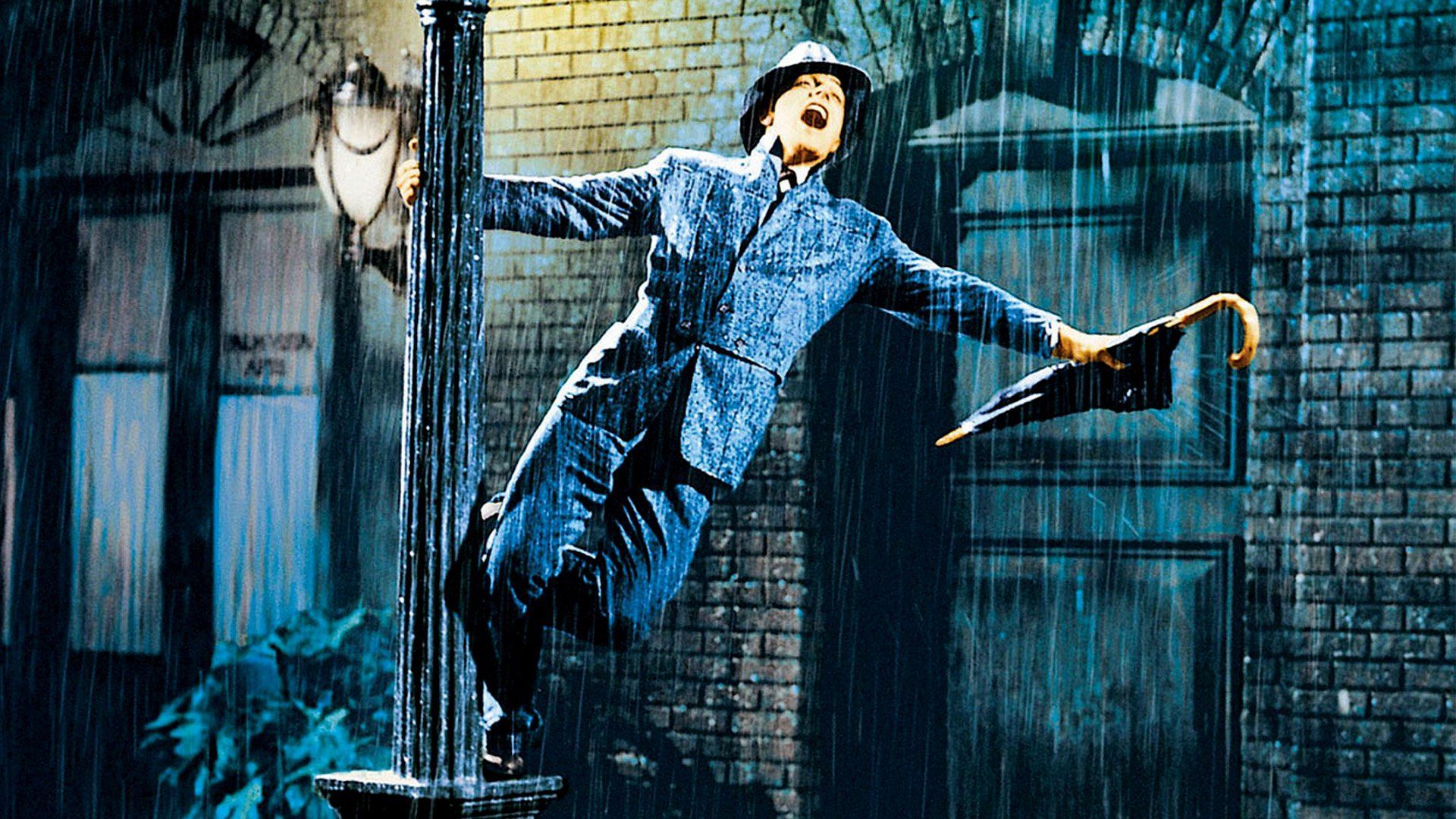
Singin’ in the Rain
Essential Viewing
Singin’ in the Rain captures what makes the movie musical such an incomprehensibly lasting genre.
Arianna Muñoz
According to all known laws of filmmaking, there is no way that a musical should be able to work. Its concept is too strange to make sense, too odd to capture an audience’s attention. The musical, of course, succeeds anyways. But how to convince people to watch a musical, to engage with a genre contingent on the audience accepting that characters will sporadically start to sing and dance? The answer is simple – show them the 1952 classic Singin’ in the Rain.
Where some musicals put off newcomers due to their length (My Fair Lady is a staggering 2hr 52min), odd subject matter (to quote John Mulaney, The Sound of Music takes place in “Austria, Nineteen-thirty-bad!”), or tendency for cheesiness (musicals of the early 30s are guiltiest of this), Singin’ in the Rain shines as it is not only one of the greatest movie musicals, but also one of the most accessible. It has a short and sweet 1hr 45 minute runtime in which directors Gene Kelly and Stanley Donen brilliantly craft a visually stunning romp full of humour, love, and of course, song and dance.
Singin’ in the Rain tells the story of silent film star Don Lockwood (Gene Kelly), chorus girl Kathy Selden (Debbie Reynolds), and musician Cosmo Brown (Donald O’Connor) as they navigate an evolving 1930s Hollywood where the rise of “talkies,” or movies with sound, promises to change their careers forever. Kelly and Reynolds have an undeniable chemistry as they portray the enemies-to-lovers romance between Don and Kathy: every scene of the pair together sparkles with wit and desire, aided by a light-hearted script that never veers into cheesiness or melodrama. As Cosmo, O’Connor completes the trio with his hilarious yet dynamic performance, effortlessly avoiding the traps of the “funny sidekick” trope. Together, the three protagonists are endlessly entertaining, and when they decide to embrace the talkie by creating their own movie musical, the audience longs for their success, charmed by their earnestness, amazed by their talent.
It is this talent that Singin’ in the Rain is best known for. Everyone knows the iconic scene in which Kelly sings the titular song, umbrella in hand, tap dancing down an empty LA street in lovestruck bliss. But this scene is just one of many that illustrate the incredible talent of Kelly and his co-stars. O’Connor stuns in his madcap performance of “Make ‘Em Laugh,” full of extraordinary leaps, pratfalls, and flips; Reynolds displays delicate charm in a sprightly rendition of “Singin’ in the Rain” during the film’s climax. However, it is the “Good Morning” sequence that is most memorable – following the group’s decision to make a musical, Don, Kathy, and Cosmo dance with infectious joy, make complex tap choreography look easy as the trio dance on tables and jump from sofas, singing and laughing all the while. It is a scene that demonstrates the immense skill behind movie musicals of this era and the exuberance that makes Singin’ in the Rain such an uplifting watch.
But it’s not all song and dance – much of what makes Singin’ in the Rain essential viewing is its visuals, which embrace Technicolor to its fullest extent. This is most apparent in the “Broadway Ballet” sequence, an extended 13-minute dance scene bursting with colour in every corner of the frame. Does “13-minute dance” give you pause? Totally understandable, however this sequence is worth waiting for. It is a testament to Kelly’s genius and cinema’s ability to tell a story through visuals alone. It is the story of Don himself: it depicts his rise to fame, the threat of talking pictures to his success, and the shedding of his ego, all through a colour palette full of neon lights, outrageous colours, and incredible scope. Giant sets in roaring scarlet reflect Don’s ignorance and arrogance, but once he meets the woman he loves the palette changes, softens to delicate pinks and purples reminiscent of a heavenly sunrise. Like the movie musical itself, “Broadway Ballet” is easy to dismiss, but when given a closer watch, it reveals itself to be a complex, beautiful, and unforgettable viewing experience.
The movie musical is the gem of American cinema, exemplifying the excesses of the Golden Age of Hollywood, when massive sets, giant budgets, and even larger talent were the norm. It is something that can seem inaccessible to us today, living in an age of realism, micro-budgets, and indie filmmaking. However, through Singin’ in the Rain we discover what makes the movie musical such an essential and incomprehensibly lasting genre: its ability to combine beauty, spectacle, and awe-inducing talent with humility, telling the simple yet sincere story of people yearning for fulfilment and love in a world which is changing before their eyes.